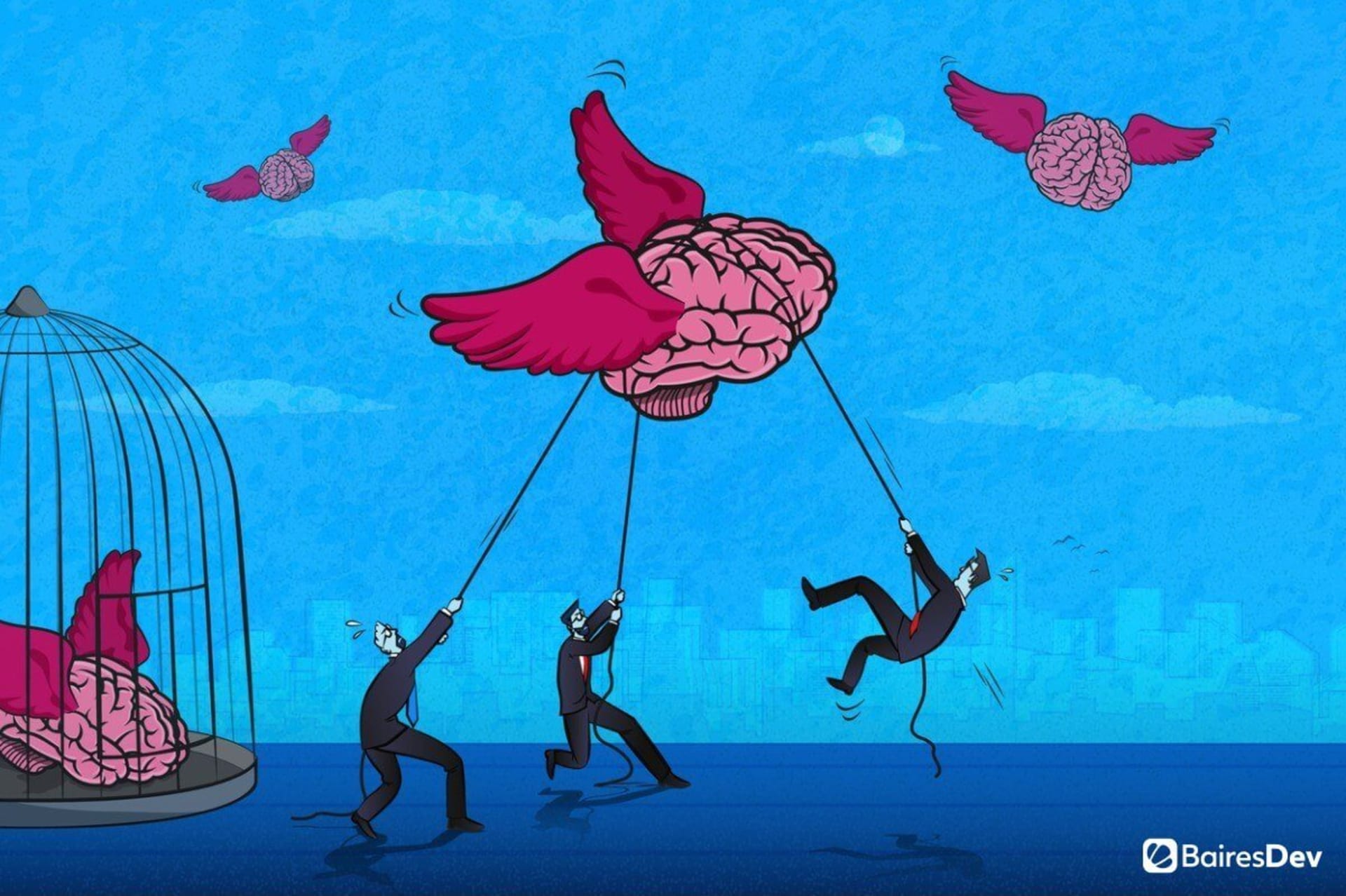It’s certainly not news that the world of work changed forever due to the global pandemic. Organizations that thought remote work was impossible and had failed at implementing remote working for years found it was not only possible but quite productive, all in a matter of weeks.
As the world has stabilized and COVID-19 seems increasingly manageable, many leaders are asking what the future looks like, particularly for in-person work. Considerations range from a sense that critical “informal” functions like innovation and collaboration are more effective when done in person to concerns about culture and employee retention in a virtual environment.
From a more practical perspective, organizations are looking at their corporate real-estate portfolio or considering whether to renew leases. A task that once seemed sacrosanct, finding space for your employees, has suddenly become more complicated.
While the need for physical spaces is still under debate, some companies are exploring a middle ground and repurposing or acquiring spaces that are more focused on collaboration, culture, and innovation than the traditional “cubicle village” most of us abandoned in 2021.
Some of the more intriguing concepts are below. They may be particularly relevant for functions like technology that combine elements of “heads down” work that’s easily performed at home with highly-collaborative working sessions.
The “Clubhouse”
Perhaps one of the most innovative concepts for a future office is the Clubhouse. Rather than attempting to create social spaces or contrived cafes, the Clubhouse seeks to make the “workplace” a destination that draws employees into a central location.
Instead of focusing primarily on workspaces, the Clubhouse concept might include everything from Yoga facilities, to podcast studios, to actual cafés or fine dining establishments. The fundamental idea behind the Clubhouse is perhaps one that strikes at the heart of many of the post-pandemic real estate questions: why would employees spend hours commuting to an uncomfortable, generic workspace when they’ve had nearly two years to design the perfect workplace in their home?
Mercurial concepts like “culture” are a strict benefit to sell to someone looking at a multi-hour commute and whose key colleagues might now be halfway across the world. The Clubhouse attempts to provide a concrete “draw” to bring employees into the same space. A drab cubicle might not get employees into cars and trains, but a fitness center or bar, populated by colleagues rather than unknown strangers, very well may.
The challenge with the Clubhouse concept is that it causes companies to compete with a variety of specialized organizations. Can an auto parts manufacturer deliver a better fitness center or sushi bar than a local gym and restaurant? If the Clubhouse is located in a major urban area, will employees look to their Clubhouse for these services or the plethora of other local offerings?
Zero Real Estate (ZRE)
Another interesting concept is altogether abandoning physical real estate. A variety of companies, primarily in the tech industry, have eliminated physical offices and, in extreme cases, allow their employees to work from anywhere in the world.
While this concept might have been frightening or seem like an outlier pre-pandemic, many organizations that consist primarily of knowledge workers found they could work remotely with no loss (or even gains) in productivity. Eliminating the costs of acquiring and supporting real estate can be used to fund salaries, investments, or even quarterly in-person meetings.
Not being tied to any geographic location has benefits and drawbacks. Not having a headquarters location opens up your talent pool to an entire region or even the entire world. However, detractors argue that it creates a company full of “free agents” that feel little loyalty towards their employer.
The Retreat
Salesforce made waves recently with the purchase of a 75-acre “retreat center” in California while also adopting an “employee choice” policy that allows employees to work remotely if they choose to do so. This is perhaps the most extreme example of a physical space focused primarily on culture, innovation, and collaboration, the stated objectives behind the acquisition.
While acquiring a large tract of California real estate is likely out of reach for all but a small handful of companies, there are hundreds of these centers available for rent around the world, or less ambitious projects may also be feasible.
The Retreat solves one of the significant problems of a remote working environment, establishing a connection with new employees. A substantial challenge for remote workers is gaining a feeling of connection to their coworkers and the company at large, and I have yet to find an individual who has found virtual onboarding superior to some form of in-person contact.
A Retreat solves this in a concentrated manner, taking employees away from the typical work environment, usually to a remote location, and allowing them to immerse themselves in company culture and interactions with their peers.
Sample Ideas Rather than Seeking Perfection
There’s no perfect solution to the post-pandemic workplace, and it remains to be seen what combination of remote, in-person, and novel approaches will prove successful. The recipe for success will likely vary depending on the organization, so seek to experiment and adopt what works rather than trying to emulate every element of a particular workplace strategy.
A full-blown Clubhouse might seem untenable, but why not try a “popup version” by bringing in a local chef for an on-site cooking class to coincide with an innovation session or all-hands meeting? Test if this creates more interest and “pull” to the office versus not including the session.
Similarly, purchasing or building a retreat center is likely out of reach for most organizations, but hundreds of locations exist for rental at various price points. Try holding a new employee onboarding session at a local retreat center rather than virtually, and track employee retention in this cohort versus your typical onboarding.
With some innovative thinking and willingness to experiment, you may find the combination of conventional and unconventional office ideas that strengthen your culture, spur innovation and collaboration, and keep your people happy and productive.






